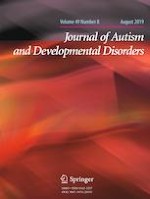16-05-2019 | OriginalPaper
Specificity of Phonological Representations for Children with Autism Spectrum Disorder
Gepubliceerd in: Journal of Autism and Developmental Disorders | Uitgave 8/2019
Log in om toegang te krijgenAbstract
This study investigated whether children with autism spectrum disorder (ASD) are sensitive to mispronunciations of familiar words and compared their sensitivity to children with typical-development. Sixty-four toddlers with ASD and 31 younger, typical controls participated in a looking-while-listening task that measured their accuracy in fixating the correct object when it was labelled with a correct pronunciation versus mispronunciation. A cognitive style that prioritizes processing local, rather than global features, as claimed by the weak central coherence theory, predicts that children with ASD should be more sensitive to mispronunciations than typical controls. The results, however, reveal no differences in the effect of mispronunciations on lexical processing between groups, even when matched for receptive language or non-verbal cognitive skills.
